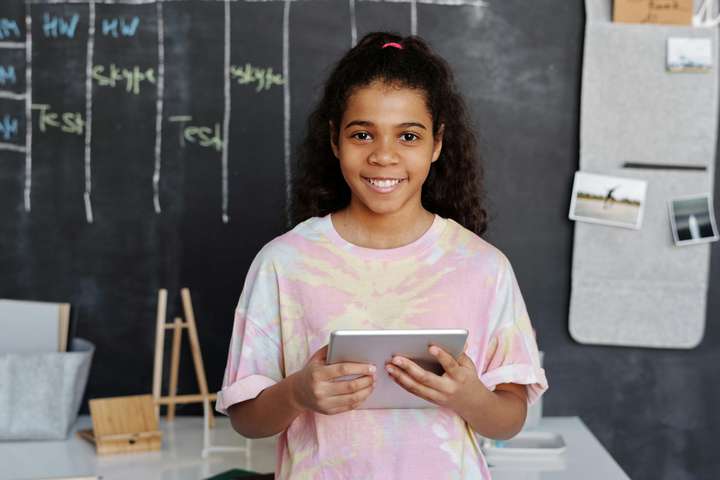With the unparalleled integration of technology into classrooms, a new age in education is about to arise. The quick development of digital technologies has changed the face of education, bringing with it individualized, dynamic, and interactive learning environments. This progression represents a fundamental change in the way that teaching and learning are approached, not merely a fad.

Virtual Classrooms: The New Frontier of Learning
A key component of contemporary education, virtual classrooms provide an adaptable and easily available learning environment that cuts across regional barriers. Via chat, video conferencing, and collaboration technologies, these virtual classrooms allow students and teachers to engage in real-time communication. This method gives students access to a multitude of tools that improve their educational experience while also accommodating different learning speeds. Because they provide possibilities to students who would not be able to attend regular courses owing to health concerns, geographic limits, or other hurdles, virtual classrooms are especially helpful in encouraging diversity.
The Role of Artificial Intelligence in Personalized Learning
Education is transforming thanks to artificial intelligence (AI), which makes highly customized learning possible. AI-powered systems can assess a student’s learning styles, areas of strength and weakness, and provide personalized learning programs. This degree of customization makes sure that every student is given the right amount of assistance and challenge, which promotes a better comprehension of the subject matter. AI chatbots and tutors are also becoming an essential part of this process since they provide students with immediate support and feedback, which keeps them motivated and on task. AI is being used in education in ways that go beyond personalized learning plans.
Gamification: Enhancing Engagement and Motivation
Gamification is a technique used in education to increase motivation and engagement in the learning process by introducing aspects of game design. This method makes use of people’s innate need for play and rivalry to provide a more engaging and immersive learning environment. Points, badges, leaderboards, and interactive challenges are a few examples of how elements can make boring classes fascinating and dynamic. In addition to making learning enjoyable, gamification promotes student participation in the classroom, which develops intrinsic drive and a feeling of ownership. Critical thinking and problem-solving abilities can also be improved via educational games and simulations.
Virtual Labs: Revolutionizing Science Education
Science education is being revolutionized by virtual laboratories, which provide students access to advanced laboratory simulations and experiments that would not otherwise be possible because of financial or safety concerns. Students can use interactive tools and real-time data analysis to perform experiments in a virtual environment with the help of these digital platforms. Without the constraints of actual lab space and supplies, virtual lab computer science provides students with a secure and regulated environment in which they can investigate scientific ideas, test theories, and see the results of their investigations. Virtual laboratories provide benefits that go beyond security and ease of use. They provide a fully immersive learning environment that can be repeated and altered to promote inquiry and improve comprehension.
The Impact of Augmented Reality on Interactive Learning
By superimposing digital data over the real world, augmented reality (AR) is improving interactive learning and fostering a mixed learning environment. Applications of AR in education have the power to make abstract ideas more concrete and comprehensible. With the use of augmented reality (AR), for instance, a conventional textbook can be transformed into a 3D interactive model that lets students explore and engage with things like architectural structures and human anatomy. By bridging the gap between theory and experience, this experiential learning method makes difficult topics more approachable and interesting.
Blended Learning Models: Combining Traditional and Digital Methods
Through the integration of digital resources and technologies with conventional classroom approaches, blended learning models are revolutionizing education. With the flexibility and individualized learning possibilities of online education combined with the structure and social contact of in-person learning, this hybrid method gives the best of both worlds. A curriculum that is more flexible and diverse, accommodating a range of learning preferences and styles, is made possible by blended learning. Students can make use of digital tools that facilitate independent study and research in addition to receiving face-to-face teaching and peer interaction.
The Evolution of Digital Literacy: Preparing Students for the Future
Education systems are changing to guarantee that students are adequately equipped for the digital age. Digital literacy is quickly becoming a necessary ability in the contemporary world. It includes a variety of skills, such as the capacity to utilize digital technologies efficiently, assess online content critically, and comprehend the moral ramifications of technology usage. The growing integration of technology into every part of life means that pupils need to be taught digital literacy to survive and prosper in a technologically advanced society.
Conclusion
Technology integration in education is more than simply a fad; it signifies a significant change in the philosophy and methods of teaching and learning. To create a generation of learners who are not just informed but also adaptive and resilient in a world that is always changing, the future of education rests in the seamless integration of conventional and digital learning experiences.

